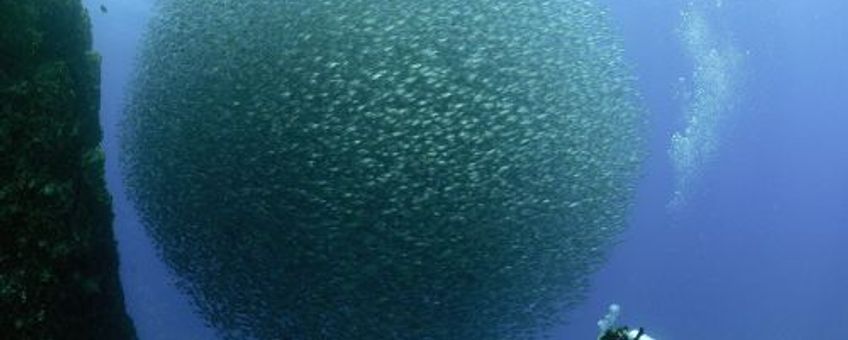
Vispopulaties bij Saba houden stand, ondanks verlies koraal
Bericht uitgegeven door Dutch Caribbean Nature Alliance (DCNA) [land] op [publicatiedatum]
Het Saba Marine Park is een goed voorbeeld van hoe door goed beheer vispopulaties stand houden, terwijl koraal verdwijnt. In het Saba Marine Park komt een grote variatie aan vissen voor. Levend koraal is een belangrijk leefgebied voor veel van deze vissoorten. Afgelopen 21 jaar is de hoeveelheid levend koraal in het gebied sterk afgenomen, onder andere door het vaker voorkomen van orkanen. Door lokale natuurbescherming houden de vispopulaties in het rif goed stand. Dit komt ook het herstel van het koraal ten goede. Onlangs is een wetenschappelijk artikel hierover verschenen in het internationale tijdschrift PLOS ONE.
Lees verder in het Engels...
Local managers sustain Saba’s reef fish communities despite two decades of coral loss The Saba Marine Park is the latest example of how well-managed marine protected areas can sustain healthy reef fish communities. On Saba this is in large part thanks to the strategic management of the Saba Conservation Foundation.

Despite the dramatic loss of live corals within the Saba Marine Park (SMP) over the past two decades, it appears the reef fish communities are holding on with the help of local marine park managers, The Saba Conservation Foundation. “Saba Marine Park is home to a wide diversity of fishes, and some of these fish are very large indeed. These big fish are very important for the whole system, since they are the large breeding adults that can produce millions of new fish” says Mae Noble of The Australian National University.

There are worrying signs however, that the reef may be in trouble. “We found a general decline in live coral cover throughout the marine park over the past 21 years. Live coral is a crucial habitat for many species, including fish,” she says. Marine Protected Areas (MPAs) are a common tool for managing and protecting marine habitats, but their effectiveness depends on managers adapting to changing threats. The loss of coral cover around Saba is symptomatic of the wider trend occurring throughout the Caribbean.

The local Saba Conservation Foundation (SCF) has managed the Saba Marine Park (SMP) that surrounds the Saba Island in the Dutch Netherland Antilles since 1987. Over the past decade the SMP has experienced increased hurricane activity, along with severe bleaching events and pest outbreaks. “Each of these disturbances chip away at the live coral habitat that fish rely upon for habitat and survival,” says Mae. While park managers cannot stop the hurricanes, the study suggests local-scale changes can help bolster Saba’s coral reefs.
“We need to protect the reef fish that play vital roles in maintaining the reef, such as herbivorous surgeonfish that graze algae, and bioeroding parrotfish that remove dead coral and stabilize the reef. These fish keep the reef healthy and ready for the settlement of new corals,” says Dr. Chris Fulton of Research School of Biology at the ANU. Another suggestion is to further protect and improve the live hard coral habitat across all zones through better public education, active seeding of new coral recruits, and rebalancing areas for habitat protection. “We have to do what we can to conserve the coral reef through this time of uncertainty amid a changing climate.” Mae said.
The research has been published in the latest issue of the international journal PLOS ONE.
Text: Dutch Caribbean Nature Alliance
Pictures: Hans Leijnse; NASA, Publiek Domein
Nederlandse introductie: Sara Mulder, De Natuurkalender
